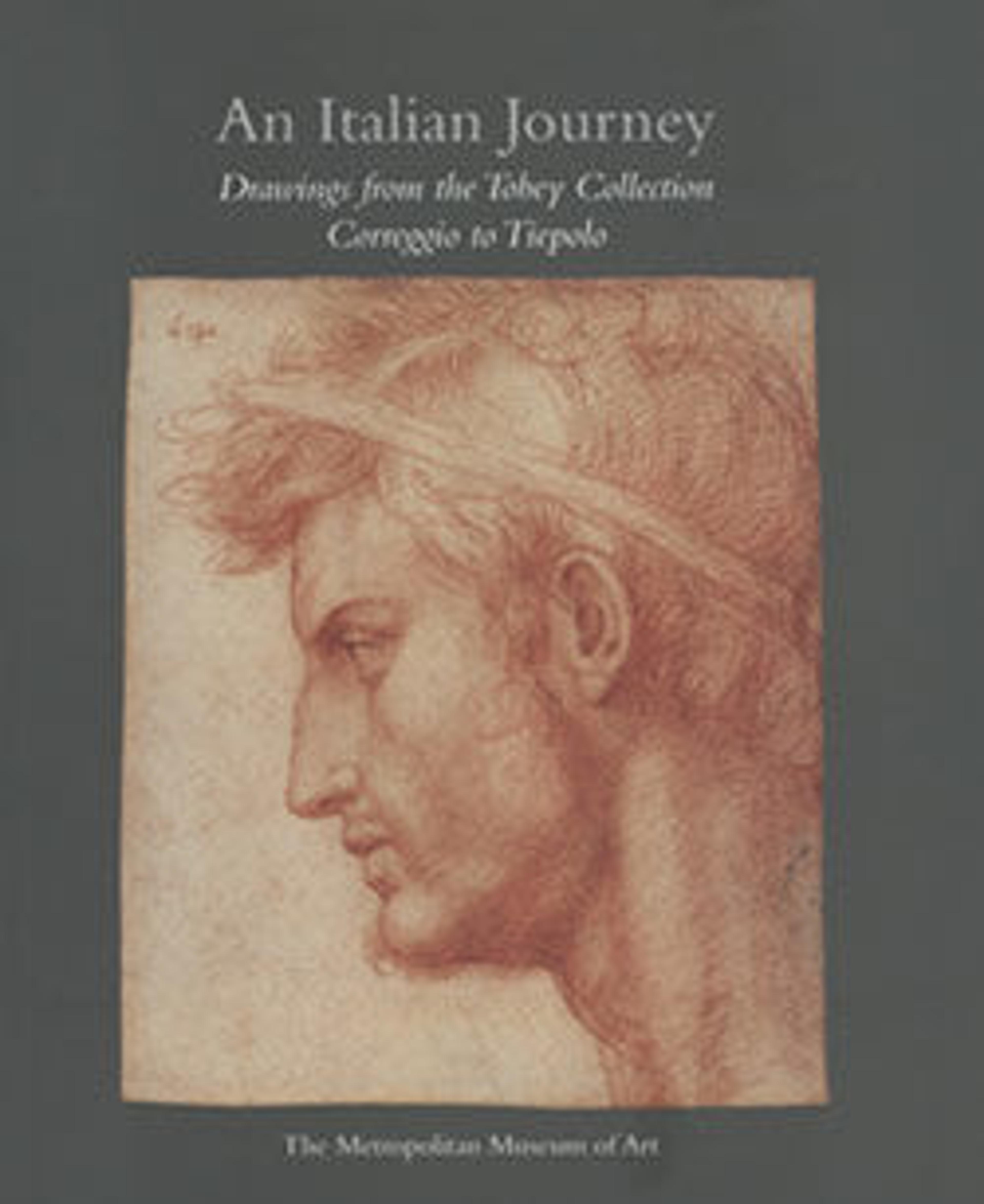Seated Sibyl and Attendant Genius (recto); Study of the Head of a Horse in Profile (verso)
This monumental Sibyl was inspired by the figural types of the "Ancestors of Christ" frescoed by Michelangelo on the Sistine ceiling from 1508 to 1512. The bold but finished manner of drawing with red chalk recalls Raphael's studies of about 1515–20, at the height of his Roman period. Painter, architect, and learned antiquarian, the Neapolitan Pirro Ligorio was active mainly in Rome and Ferrara. With her large hands and thick wrists, the Metropolitan Museum Sibyl probably dates from the 1540s, thus fairly early in Ligorio's years in Rome.
An attribution to Sebastiano del Piombo had been proposed by Philip Pouncey when this drawing was in the Squire collection in London, and the drawing was published and exhibited with this attribution after it came to the Metropolitan Museum. Then in 1971 J. A. Gere proposed the name of Pirro Ligorio, and his suggestion has since been accepted by Pouncey. Even if the amplitude of form and the sensitive lighting of the seated female figure suggested the name of Sebastiano, Gere points out that "the monstrous hands, clumsily attached to the arms by grotesquely malformed wrists, show this characteristic mannerism [of Ligorio] exaggerated to the point of actual deformity." The drawing cannot be connected with any extant work by Sebastiano del Piombo, but it is clear, that the figure is inspired by the sibyls in the Sistine Chapel.
An attribution to Sebastiano del Piombo had been proposed by Philip Pouncey when this drawing was in the Squire collection in London, and the drawing was published and exhibited with this attribution after it came to the Metropolitan Museum. Then in 1971 J. A. Gere proposed the name of Pirro Ligorio, and his suggestion has since been accepted by Pouncey. Even if the amplitude of form and the sensitive lighting of the seated female figure suggested the name of Sebastiano, Gere points out that "the monstrous hands, clumsily attached to the arms by grotesquely malformed wrists, show this characteristic mannerism [of Ligorio] exaggerated to the point of actual deformity." The drawing cannot be connected with any extant work by Sebastiano del Piombo, but it is clear, that the figure is inspired by the sibyls in the Sistine Chapel.
Artwork Details
- Title: Seated Sibyl and Attendant Genius (recto); Study of the Head of a Horse in Profile (verso)
- Artist: Pirro Ligorio (Italian, Naples ca. 1512/13–1583 Ferrara)
- Date: ca. 1540
- Medium: Red chalk on beige paper (recto); pen and brown ink (verso)
- Dimensions: 9 5/8 x 10 7/16in. (24.5 x 26.5cm)
- Classification: Drawings
- Credit Line: Pfeiffer Fund, 1962
- Object Number: 62.120.7
- Curatorial Department: Drawings and Prints
More Artwork
Research Resources
The Met provides unparalleled resources for research and welcomes an international community of students and scholars. The Met's Open Access API is where creators and researchers can connect to the The Met collection. Open Access data and public domain images are available for unrestricted commercial and noncommercial use without permission or fee.
To request images under copyright and other restrictions, please use this Image Request form.
Feedback
We continue to research and examine historical and cultural context for objects in The Met collection. If you have comments or questions about this object record, please contact us using the form below. The Museum looks forward to receiving your comments.
